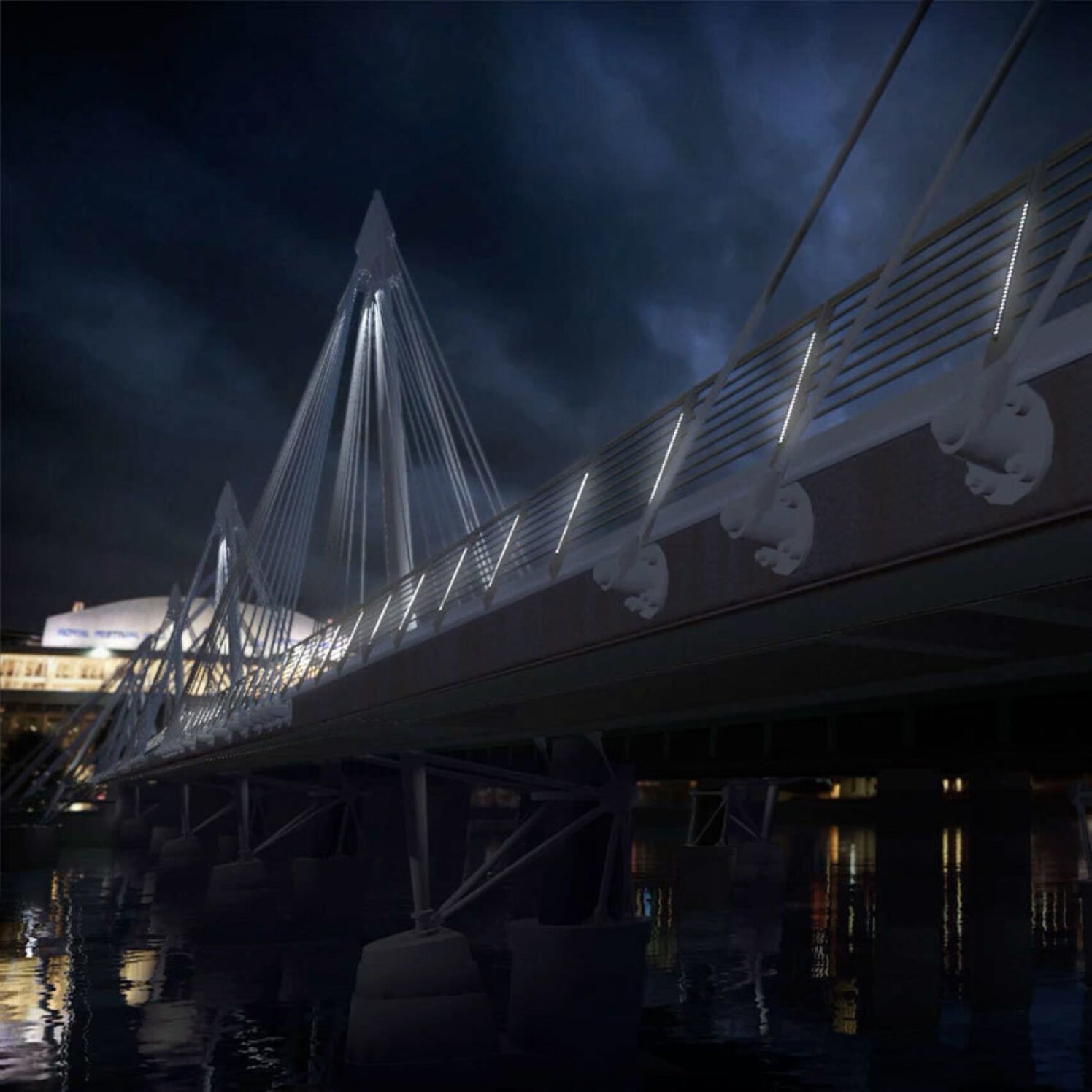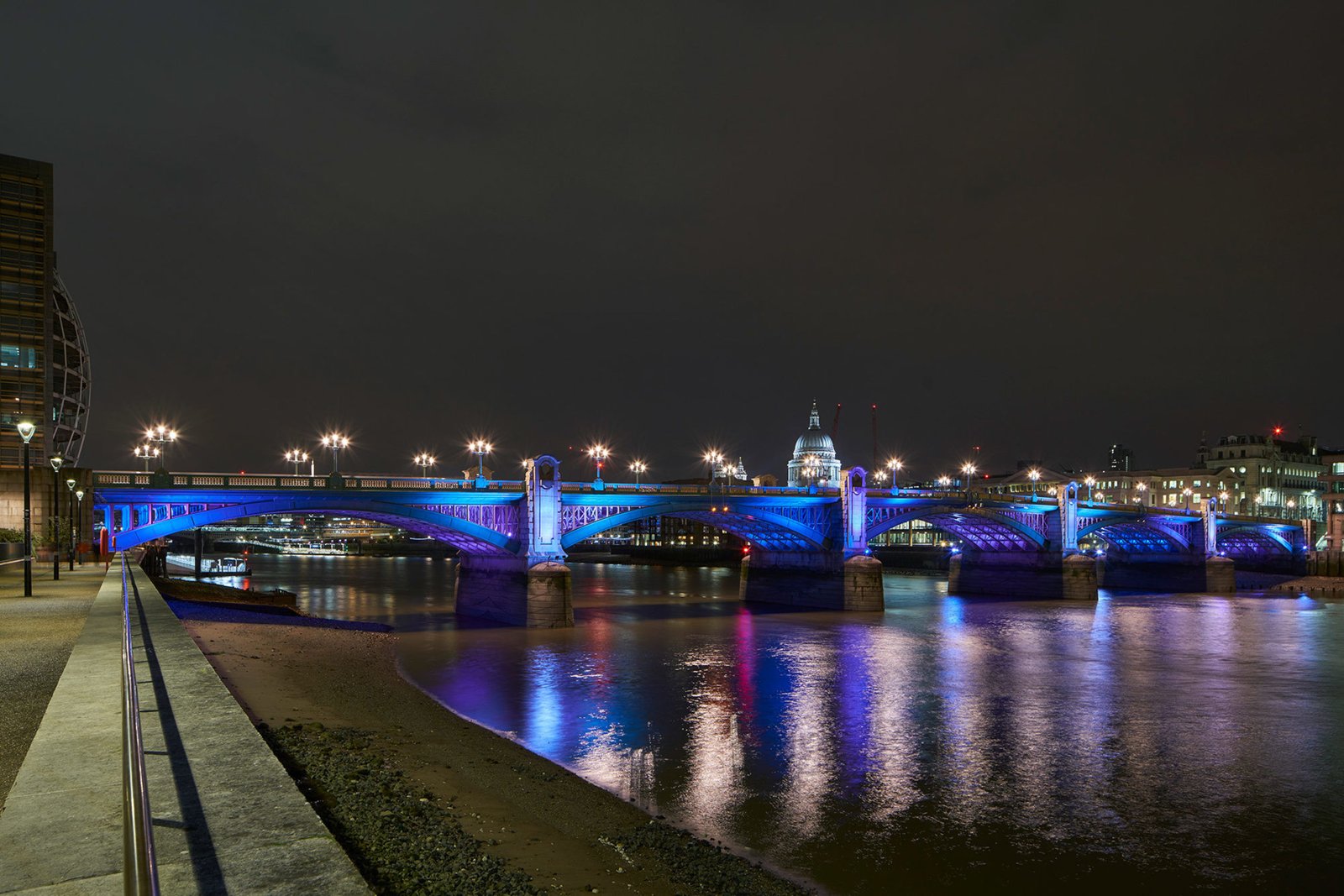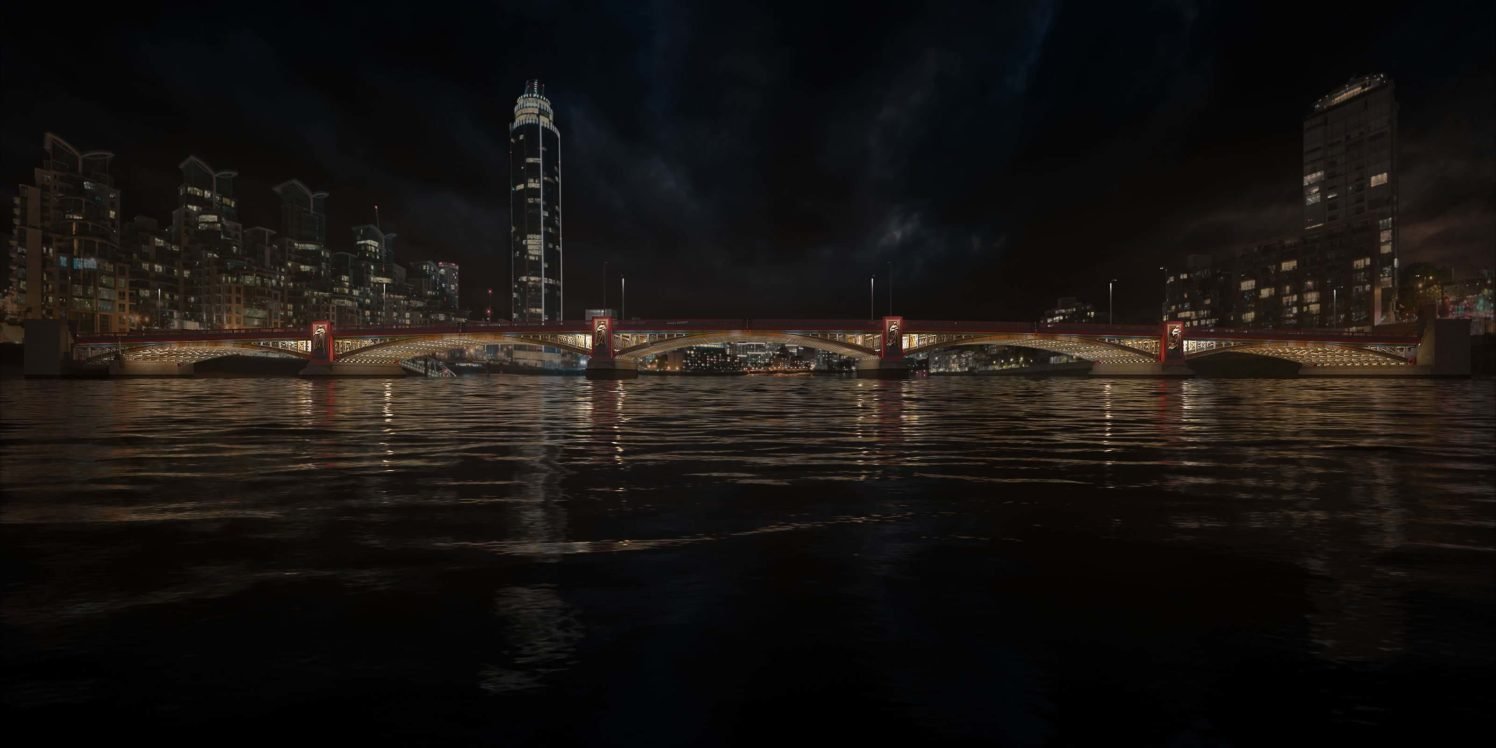At first glance, architectural lighting on bridges may seem like a functional detail in the urban landscape—a boost in visibility, a safety solution. However, London’s Illuminated River project elegantly demonstrates that light, when conceived as a form of art, can become an expression of urban identity, a driver of cultural regeneration, and a catalyst for social life, tourism, and a sense of belonging.
A Nocturnal Story Along the Thames
Stretching over six kilometers along the banks of the River Thames, the Illuminated River project is the most extensive permanent architectural lighting program ever implemented on bridges. Nine of London’s iconic bridges have been transformed through light into nighttime landmarks that connect the city not just physically, but emotionally as well.
What’s most striking about this project is the subtlety of the intervention. Each bridge was treated as a distinct architectural personality—and the lighting was selected and calibrated according to its structural style, historical context, and nighttime pedestrian flow. The colors are discreet, the rhythms slow, the movements gentle—everything is designed to support, not to overshadow.
The Psychology of Light and the City That Breathes
In this context, light is a medium of communication, not just a technical tool. Architectural lighting on bridges, when used with intelligence and sensitivity, can influence people’s moods. This is one of the most valuable lessons of the project: light doesn’t need to be loud to be memorable. When it is integrated into architecture, it becomes a form of urban silence—creating space for thought, for nighttime conversations, and for contemplation.
Art, Technology, and Heritage
The project was carried out through a collaboration between American artist Leo Villareal and the architects from Lifschutz Davidson Sandilands. Villareal programmed fluid light sequences inspired by the movement of water, while the architects adapted the technical solutions so that each bridge would remain part of the landscape without being dominated by the installations.

In this balanced approach, we find a similar idea to that of French artist Patrice Warrener, known for his Chromolithe system, which “paints” historic buildings using polychromatic lighting technology. In his works, Warrener has managed to bring forgotten architectural details back into focus through a controlled play of color and precision. Although Illuminated River is more subdued and linear than the Chromolithe interventions, both visions share the same belief: that light, when used with respect, can become a form of visual restoration.
Tourism, Belonging, and Urban Regeneration
One of the side effects—far from accidental—of the London project is the revitalization of nighttime tourism. Thousands of people choose to walk the route of the illuminated bridges, photographing them, telling their stories, and integrating them into their own emotional experience of the city. In this way, architectural lighting on bridges becomes not only aesthetic, but also social. It creates meeting points, paths for exploration, and contexts for belonging.

Cities that understand the potential of this type of intervention can build more than infrastructure—they can build emotion. Whether it’s bridges, fortresses, hills, or riverbanks, any natural or built element can become part of a nocturnal narrative network, if approached with sensitivity, responsibility, and vision.
A Model for Other Cities
Romania, for example, has enormous potential in this direction: the bridges of Timișoara, the citadels of Alba Iulia, the Chindia Tower in Târgoviște, the banks of the Bega or the Olt rivers—all can be reimagined through lighting design. What’s needed is not spectacular projections or extravagant investments, but a deep understanding of context, history, and the way people relate to nighttime spaces.
Conclusion
Architectural lighting on bridges, as envisioned in Illuminated River, is not mere decoration. It is a form of reconnection—between the city and its inhabitants, between past and present, between matter and emotion. When carried out with care, artistic vision, and respect for heritage, light can become a subtle yet powerful tool—one that reweaves the city around its water, its memory, and its humanity.

